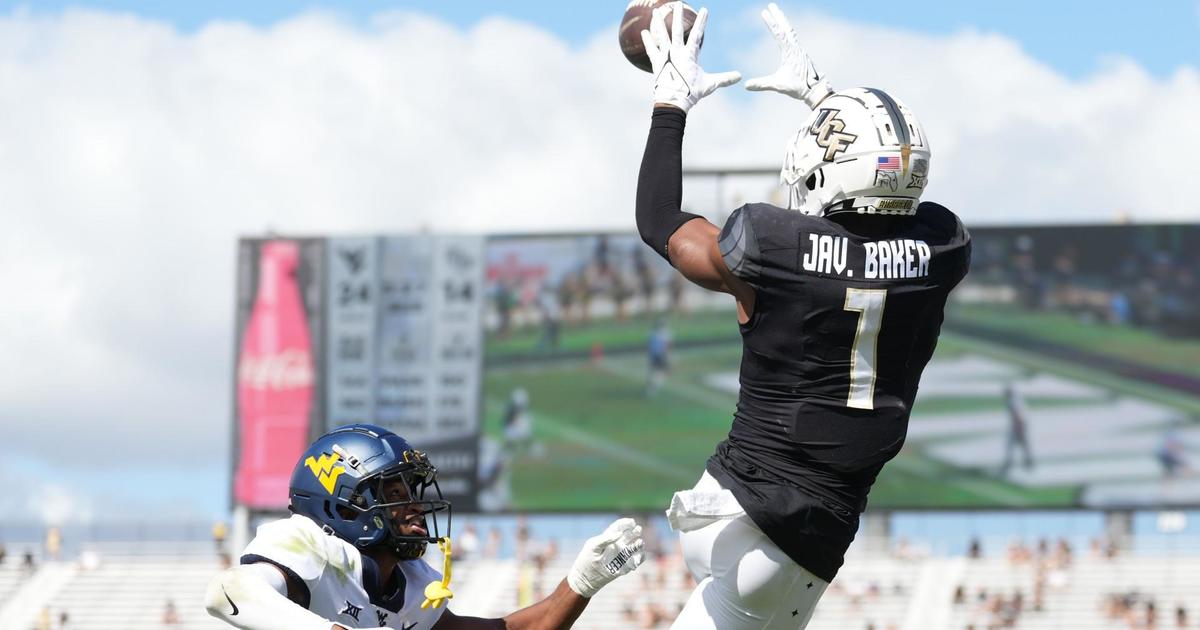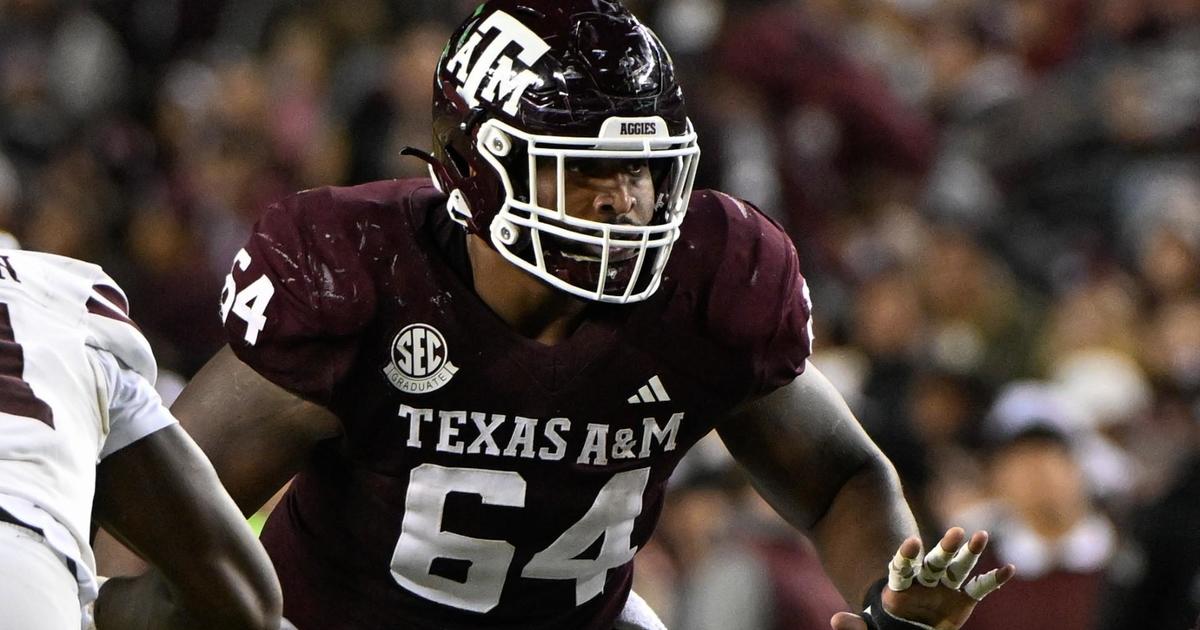NFL To Propose Some Confusing Language To New Catch Rule, Claims Process Has Been Simplified
By Michael Hurley, CBS Boston
BOSTON (CBS) -- As the old saying goes, nobody knows what a catch is anymore! Of course despite some objections that were raised over the past several years, the rules regarding a catch were never tremendously complex to understand. Nevertheless, the NFL made it an offseason priority to address and "fix" the catch rule.
In that endeavor, the league's competition committee worked hard to establish a new, simplified explanation for what is and what is not a catch. Huzzah!
There's only one problem, though, with officiating chief Alberto Riveron's message about the new rules: The committee appeared to introduce a whole new level of ambiguity. In the effort to try to make things simpler, the committee just might have added a whole new area for complications and obfuscation.
Check it out:
The first part of the rule, on its surface, is simple enough. However, the news one day prior noted that officials will allow for "slight movement" to have taken place in the process of securing control. Do you want to know what the definition of "slight movement" might be? Who cares?! Don't be a nerd. The rules are simple now.
The second rule is not a change. Simple enough. That part of the rule shouldn't change, because it's always exhilarating to sit in anticipation to find out whether or not Cris Collinsworth is going to say "butt cheek" on national television. "Well, Al, he didn't get both feet down but let's see on the replay ... yes, his butt cheek came down inbounds." That's basically Christmas in October.
And then there is the third part of rule.
A "third step." OK. Seems fine ... until we remember the hundreds of passes over the middle that led to receivers catching the ball, taking anywhere from one to five steps, having the ball knocked out of their control, and then ruled either a completion or an incompletion, based upon the on-field official's best guess at a bang-bang play. Has that confusion been eliminated from the equation? I suppose we'll find out.
Then there is "reaching/extending for the line to gain." This part should just be called "Yes, Dez Bryant caught the ball." It makes sense on certain levels. If you possess the ball long enough to be able to try to reach it forward for extra yardage, then logically it's fair to say that you had gained "possession." Sure. That part may seem reasonable, but as you'd know if you were a viewer of the award-winning vlog posted on this website, then you'd already know that it's not quite so black-and-white. There will be instances where a receiver grabs the ball out of mid-air, allows it to "slightly move" as he secured the reception, has his two feet touch the ground while falling, start to reach the ball forward in order to pick up a first down, but then have the ball knocked loose by a safety coming over the top. What has always been an incompletion will now, by rule, be a fumble? Should be a cinch to officiate down on the field at live speed.
And now we've arrived at what I consider to be the grand finale of this "simplified" catch rule. Item 3-3 on Riveron's slide. (Don't you usually switch it up with some letters, like 3A, when you indent those sub-items on your numbered lists on PowerPoint? Who put this thing together? Dock him five points.)
This marvelous third part is so wonderful it needs to be shared by itself:
"Or the ability to perform such an act."
Say what now?
So a player doesn't even need to satisfy this "requirement" in order to make a legal catch. He just needs to have been able to have satisfied this requirement. You know, if he had felt like it. We all have bad days where we can't be bogged down by doing evvvvverything people ask of us. Honestly, in this day and age, who has the time? If there are tweets to be read, then you can't expect us to complete all of our assignments at work.
In earnest, I suppose the intention behind this distinction would be to say ... actually I'm not quite sure. Let's take the Jesse James example, because that's the reason we're even doing any of this. Seemingly everyone in the world (and certainly everyone in Pittsburgh) has argued that James absolutely caught and possessed the football, because he was able to extend the football toward the goal line. That's been the primary argument.
OK ... so what if James had not extended that football toward the goal line? What if he went up exactly like he did, grabbed the ball exactly like he did, but then hit the ground and lost possession? It took the same amount of time, and it happened in the same exact place on the field. The only difference is that he didn't reach out or extend the football for the goal line before hitting the ground and losing control of the football.
Now, according to this catchy Rule 3-3 proposal, James will be awarded a catch. Though he did not reach out or extend the football toward the goal line, he had the ability to reach out if he had wanted. Ergo, we'll all ignore the loss of possession that took place, because James (or any other player trying to secure a catch) could have reached that arm out if he really wanted to.
To try to further clarify: All three conditions must be satisfied. One, control. Two, a pair of feet or one body part down. Three, either a third step, or an extension of the ball ... or an "ability" to extend the ball.
If you look at the James example -- again, that's just one play, but it sure seems to be the hot button issue, even months after the fact -- he did not take a third step, but he did extend the ball. By the new rule, that would be a catch. Fine. But if he made that same play without the extension ... then what? We can now add "determining whether or not a player had the ability to do something" to the list of things NFL referees and Riveron himself must determine in a timely fashion.
(Riveron, mind you, couldn't piece together a convincing argument for some of his more questionable decisions last year, even when he had hours to gather visual evidence. There should be no doubt about his capacity to determine the abilities of what players could have done in an imaginary world.)
Take another example that also involved the Patriots: Malcolm Butler's strip of Odell Beckham in the end zone in 2015. On that play, Beckham gained control, got two feet down in the end zone, then turned his body up the field before Butler came over to swat the ball out of Beckham's hands. It was ruled a touchdown on the field but was then overturned on replay review. He didn't really extend the ball forward, but could he have extended the ball forward? Let's just have Tony Corrente and Al Riveron decide. That'll simplify the issue.
Those are just a couple of examples, but there's still going to be a slew of problems. What about Golden Tate's apparent touchdown that was ruled an interception against the Bears, but then overturned and ruled a touchdown? Does the new rule proposal tackle that? (Not really.)
What do we do about Troy Polamalu's barrel roll that ended with him stripping himself of possession? Does a roll on one's buttocks equate to a third step?
We could go on and on and on. You can put together a slide for a presentation and make some people believe a problem has been solved, but that doesn't mean anything's actually been made simpler.
But anyway. What can you do? At least that's all been cleared up. Phew. Things were getting dicey there. But now that everything's been simplified, we can all find comfort in the fact that the NFL has it all figured out.
You can email Michael Hurley or find him on Twitter @michaelFhurley.




